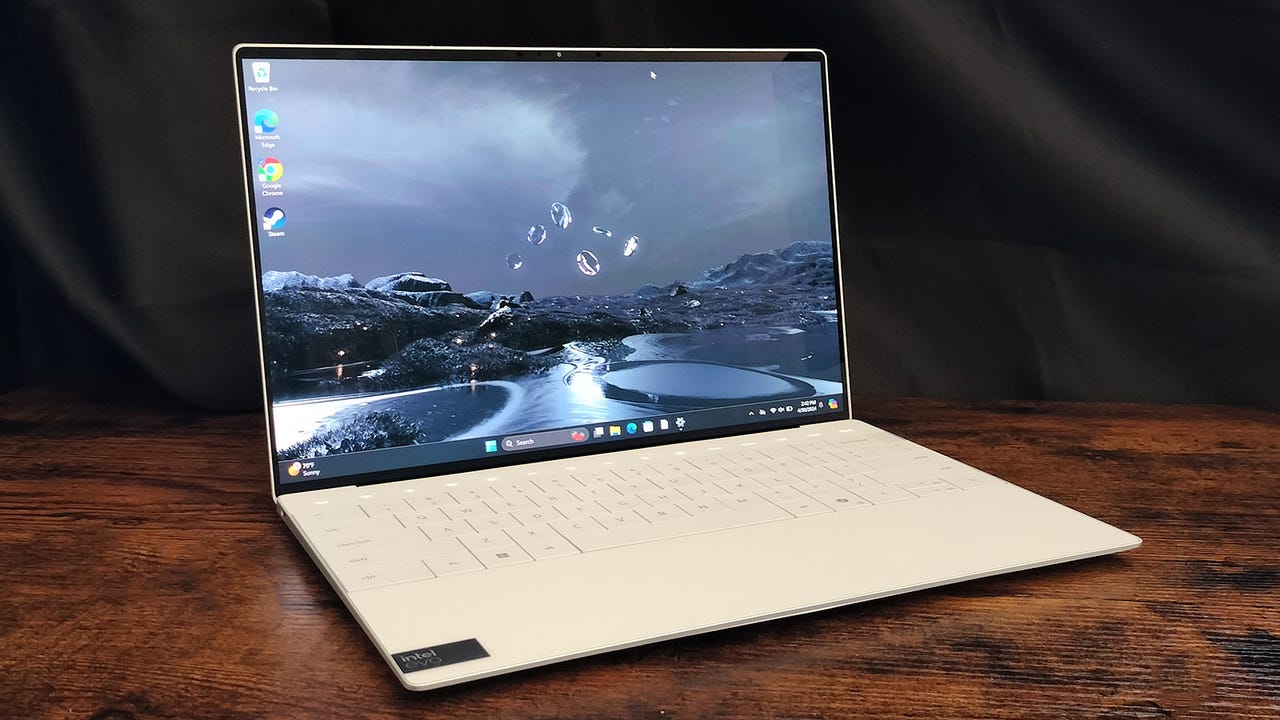'ZDNET Recommends': What exactly does it mean?
ZDNET's recommendations are based on many hours of testing, research, and comparison shopping. We gather data from the best available sources, including vendor and retailer listings as well as other relevant and independent reviews sites. And we pore over customer reviews to find out what matters to real people who already own and use the products and services we’re assessing.
When you click through from our site to a retailer and buy a product or service, we may earn affiliate commissions. This helps support our work, but does not affect what we cover or how, and it does not affect the price you pay. Neither ZDNET nor the author are compensated for these independent reviews. Indeed, we follow strict guidelines that ensure our editorial content is never influenced by advertisers.
ZDNET's editorial team writes on behalf of you, our reader. Our goal is to deliver the most accurate information and the most knowledgeable advice possible in order to help you make smarter buying decisions on tech gear and a wide array of products and services. Our editors thoroughly review and fact-check every article to ensure that our content meets the highest standards. If we have made an error or published misleading information, we will correct or clarify the article. If you see inaccuracies in our content, please report the mistake via this form.
I tested Dell's XPS 13 and its eye-catching design is its second best feature

ZDNET's key takeaways
- Dell's 2024 XPS 13 starts at $1,299 and takes inspiration from last year's XPS 13 Plus.
- It has a sleek, unique form factor, hi-res OLED touch screen, and an upgraded processor.
- It also inherits some of the older model's limitations, with limited ports and a tendency to run hot.
About a year ago, I reviewed the Dell XPS 13 Plus, a great laptop I applauded for its stylish design, OLED touchscreen, and solid performance. The thousands of five-star reviews prove I wasn't alone in my praise.
Also: Dell XPS 16 (2024) review: Best Windows laptop I've tested so far this year
The reception of the Plus model was so positive, in fact, that Dell's design approach for this year's XPS 13 was centered around incorporating elements from the Plus model into the XPS 13. While the customer base might love this, I would argue it's a double-edged sword. Sure, you get a laptop loaded with the features that made the Plus great, but you also inherit some of its issues.
View at DellTo start, the keyboard is almost identical to the old unit. It has the same zero-lattice style, meaning the keys stretch from end to end. It's comfortable to use, and the buttons sport a springiness that allows for quick, accurate typing.
Additionally, the LED capacitive touch panel is back on the XPS 13, located above the keyboard. Like the previous model, you can swap between the touch panel's media controls and function keys by hitting the Fn key. The only difference is the addition of the Copilot key in the lower right-hand corner.
Also: This Asus laptop looks unassuming, but it has a powerful feature creatives will love
Also making a comeback is the invisible trackpad in the middle of the wrist rest. I'm a big fan of this look, as it ties in nicely with the rest of the laptop's sleek, minimalist design. However, learning where the trackpad begins and ends may take some getting used to.
Moving onto the display, it's equally as stunning. My review unit came with a 3.5K (resolution of 2880 x 1800 pixels) OLED touchscreen showing vibrant shades of color and deep blacks. What's more, the bezels are razor-thin, making the screen look larger than its actual size.
The unit I tested was the dimmest of the available options, maxing out at 400 nits brightness. That amount is fine for most situations, but you'll struggle to see the screen in bright environments. Luckily, the display's anti-reflective coating does mitigate glare.
In addition, my test unit had the 60Hz refresh rate, which is okay, but will lack the smoothness found in the 120Hz refresh rate from the other configuration. The difference in refresh rate is also noticeable when moving the cursor. For example, I saw a slight delay in the mouse arrow's movement on the screen, as well as an occasional mismatch between trackpad inputs and onscreen behavior.
Also: The best Windows laptop you can buy: Expert tested
Unfortunately, I couldn't fix this issue, as the laptop doesn't support refresh rates higher than 60Hz. For this reason, I recommend buying the XPS 13 with the Quad HD Plus (2560 x 1600 resolution) touchscreen and 120Hz refresh rate for smoother cursor animations.
The most impactful changes to this year's XPS 13 can be found internally. Dell equipped the XPS 13 with the latest "Meteor Lake" hardware, which houses an Intel Core Ultra 7 155H processor, Intel Arc graphics card, and 32GB of memory. This amount of memory paired with the Ultra 7 results in quick load times and smooth and efficient multitasking.
I ran some benchmarking tests to see its performance first-hand and was pleasantly surprised. On Cinebench, the XPS 13 consistently beat other high-end processors -- such as the Intel Core i9-9880H -- when it came to rendering content and handling other tough workloads.
Also: I tested Dell's 2024 XPS 14 laptop and can't recommend it enough
Regarding some of the issues the XPS 13 inherited from previous models, the first thing to come to mind is the dismal selection of ports. You'll find two USB-C ports (one on either side) on this laptop, and that's it; no HDMI port, no headphone jack, not even a USB-A port. I recommend using this laptop with a docking station if you plan on connecting to an external monitor.
Second, Dell has yet to address the overheating issue. When tasked with too many apps and services -- or a few graphics-intensive ones -- this device can get pretty toasty, to the point where it's uncomfortable to have on your lap. There is a small heat vent below the display, but it's not enough.
ZDNET's buying advice
Despite these issues, I still recommend the 2024 XPS 13. It performs very well, has a solid battery life, a hi-res display, and a unique, eye-catching design. It's important to mention the old XPS 13 Plus is no longer available on Dell's website at the time of this writing, so if you're looking for a laptop that looks the same (but performs better) this is the machine for you.
Prices start at $1,299 for the base model. However, to get the most out of it, you'll want to opt for better configurations, which increases the final cost. As stated earlier, go for the Quad HD Plus display with the 120Hz refresh rate.
